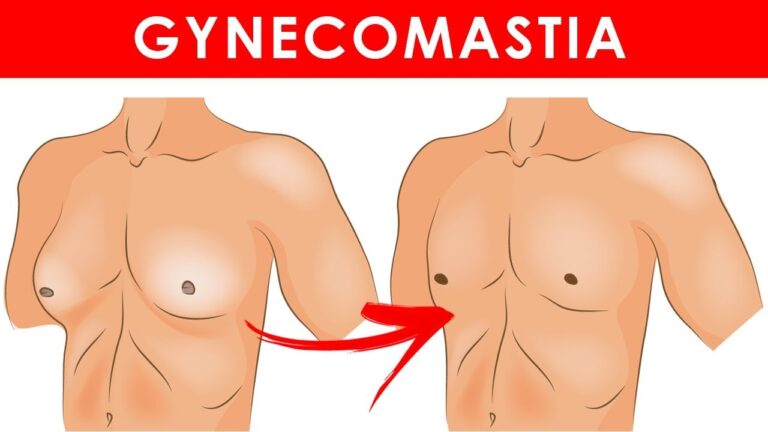Gynecomastia is a condition characterized by the enlargement of male breast tissue, often caused by an imbalance of estrogen and testosterone. It can affect one or both breasts and may lead to discomfort and self-consciousness. While gynecomastia is common and usually benign, it can be treated through various methods. Here are some effective strategies to help reduce and eliminate gynecomastia.
1. Identify the Underlying Cause
Understanding the root cause of gynecomastia is crucial for effective treatment. Common causes include:
- Hormonal Imbalance: Elevated estrogen levels or low testosterone levels can lead to breast tissue growth.
- Medications: Certain drugs, such as steroids, anti-androgens, and some antidepressants, can cause gynecomastia.
- Health Conditions: Conditions like hyperthyroidism, kidney disease, and liver disease can contribute to gynecomastia.
- Lifestyle Factors: Obesity, substance abuse (alcohol, marijuana), and poor diet can also play a role.
Consult a healthcare provider for a thorough evaluation to determine the specific cause of your gynecomastia.
2. Adopt a Healthy Diet
A balanced diet can help regulate hormones and reduce body fat, which can contribute to gynecomastia. Focus on:
High-Protein Foods:
- Lean meats, fish, eggs, and legumes help build muscle and reduce fat.
Fruits and Vegetables:
- Rich in antioxidants and fiber, they support overall health and hormone balance.
Healthy Fats:
- Sources like avocados, nuts, seeds, and olive oil help maintain hormonal health.
Whole Grains:
- Brown rice, quinoa, and whole-wheat products provide essential nutrients and fiber.
Avoid Processed Foods and Sugars:
- These can disrupt hormonal balance and lead to weight gain.
3. Engage in Regular Exercise
Exercise can help reduce overall body fat and improve muscle tone, which can minimize the appearance of gynecomastia. Incorporate:
Strength Training:
- Focus on exercises that build chest muscles, such as bench presses, push-ups, and dumbbell flyes.
Cardiovascular Exercise:
- Activities like running, cycling, and swimming help burn fat and improve overall fitness.
High-Intensity Interval Training (HIIT):
- Short bursts of intense exercise followed by rest periods can be effective for fat loss.
4. Manage Stress
Chronic stress can lead to hormonal imbalances that exacerbate gynecomastia. Implement stress management techniques:
Mindfulness and Meditation:
- Practices like mindfulness meditation can reduce stress and promote hormonal balance.
Adequate Sleep:
- Aim for 7-9 hours of quality sleep per night to support overall health and hormone regulation.
Relaxation Techniques:
- Yoga, deep breathing exercises, and hobbies that promote relaxation can help manage stress levels.
5. Avoid Substances that Contribute to Gynecomastia
Certain substances can increase the risk of developing gynecomastia. Limit or avoid:
Alcohol:
- Excessive alcohol consumption can disrupt hormone balance.
Recreational Drugs:
- Marijuana and anabolic steroids are known to contribute to gynecomastia.
Certain Medications:
- Consult your doctor about alternative medications if you suspect your current prescriptions are causing gynecomastia.
6. Consider Natural Supplements
Some natural supplements may help balance hormones and reduce gynecomastia, but consult a healthcare provider before starting any new supplements:
Zinc:
- Supports testosterone production and overall hormonal health.
Vitamin D:
- Essential for maintaining hormonal balance.
Fish Oil (Omega-3 Fatty Acids):
- Reduces inflammation and supports hormone health.
DIM (Diindolylmethane):
- Found in cruciferous vegetables, it helps promote healthy estrogen metabolism.
7. Medical Treatments
If lifestyle changes and natural remedies are insufficient, medical treatments may be necessary:
Hormone Therapy:
- Medications like tamoxifen and raloxifene can help reduce breast tissue growth by balancing hormones.
Surgery:
- In severe cases, surgical procedures such as liposuction or mastectomy can remove excess breast tissue.
Conclusion
Gynecomastia can be a distressing condition, but it is often manageable through a combination of lifestyle changes, dietary adjustments, exercise, and, in some cases, medical treatment. Identifying the underlying cause is essential for effective treatment. Always consult with a healthcare professional for a proper diagnosis and personalized treatment plan. By taking proactive steps, you can reduce the symptoms of gynecomastia and improve your overall health and confidence.

Comments
Post a Comment